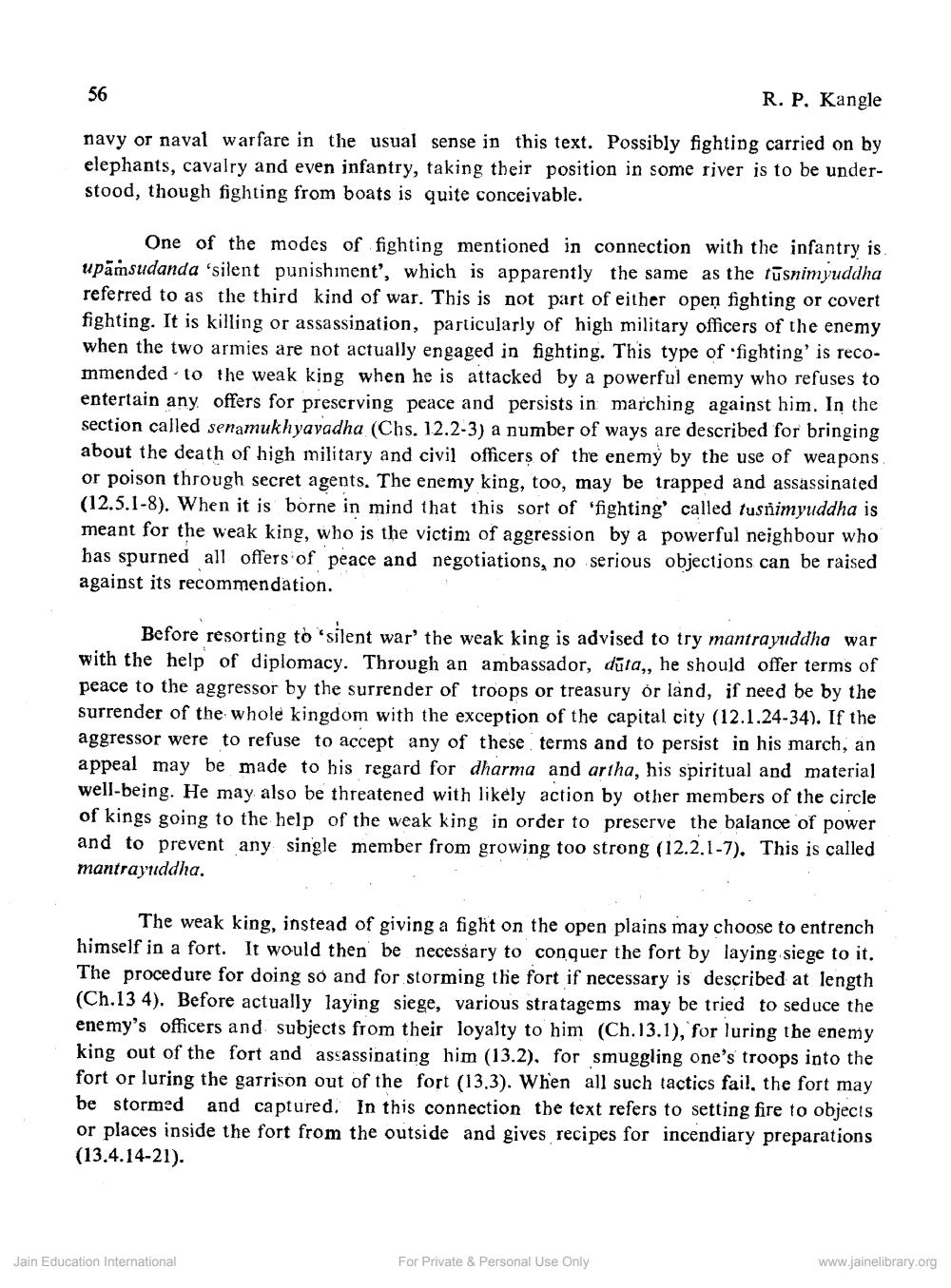Book Title: Kautilya on war Author(s): R P Kangle Publisher: Z_Jinvijay_Muni_Abhinandan_Granth_012033.pdf View full book textPage 7
________________ 56 R. P. Kangle navy or naval warfare in the usual sense in this text. Possibly fighting carried on by elephants, cavalry and even infantry, taking their position in some river is to be understood, though fighting from boats is quite conceivable. One of the modes of fighting mentioned in connection with the infantry is upamsudanda 'silent punishment', which is apparently the same as the tūsnimyuddha referred to as the third kind of war. This is not part of either open fighting or covert fighting. It is killing or assassination, particularly of high military officers of the enemy when the two armies are not actually engaged in fighting. This type of fighting' is recommended to the weak king when he is attacked by a powerful enemy who refuses to entertain any offers for preserving peace and persists in marching against him. In the section called senamukhyavadha (Chs. 12.2-3) a number of ways are described for bringing about the death of high military and civil officers of the enemy by the use of weapons or poison through secret agents. The enemy king, too, may be trapped and assassinated (12.5.1-8). When it is borne in mind that this sort of 'fighting called tusnimyuddha is meant for the weak king, who is the victim of aggression by a powerful neighbour who has spurned all offers of peace and negotiations, no serious objections can be raised against its recommendation. Before resorting to 'silent war the weak king is advised to try mantrayuddha war with the help of diplomacy. Through an ambassador, dūta,, he should offer terms of peace to the aggressor by the surrender of troops or treasury or land, if need be by the surrender of the whole kingdom with the exception of the capital city (12.1.24-34). If the aggressor were to refuse to accept any of these terms and to persist in his march, an appeal may be made to his regard for dharma and artha, his spiritual and material well-being. He may also be threatened with likely action by other members of the circle of kings going to the help of the weak king in order to preserve the balance of power and to prevent any single member from growing too strong (12.2.1-7). This is called mantrayuddha. The weak king, instead of giving a fight on the open plains may choose to entrench himself in a fort. It would then be necessary to conquer the fort by laying siege to it. The procedure for doing so and for storming the fort if necessary is described at length (Ch.13 4). Before actually laying siege, various stratagems may be tried to seduce the enemy's officers and subjects from their loyalty to him (Ch.13.1), for luring the enemy king out of the fort and assassinating him (13.2), for smuggling one's troops into the fort or luring the garrison out of the fort (13,3). When all such tactics fail, the fort may be stormed and captured. In this connection the text refers to setting fire to objects or places inside the fort from the outside and gives recipes for incendiary preparations (13.4.14-21). Jain Education International For Private & Personal Use Only www.jainelibrary.orgPage Navigation
1 ... 5 6 7 8
